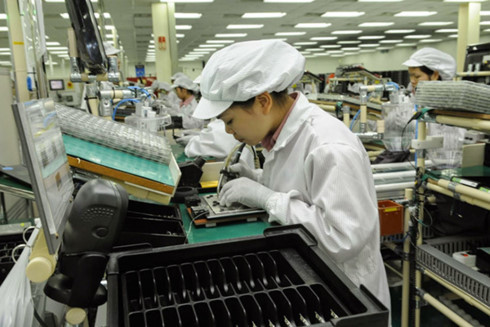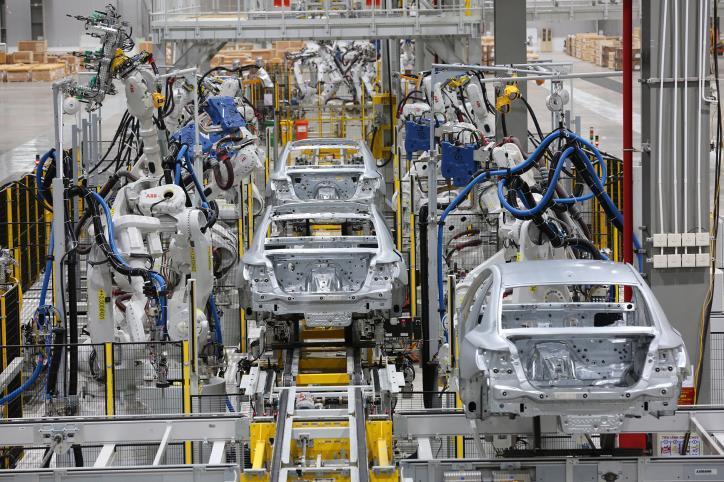 |
Vietnam's economy has developed better than most other countries during the COVID-19 pandemic and is now in a very favorable position to lure foreign investment inflows after the China-US trade war and in the post-Covid-19 period.
Vietnam welcomed the first wave of foreign direct investment (FDI) after it opened up to foreign investment in the late 1980s and the second wave of FDI after the country became a member of the World Trade Organization (WTO) in 2007. At present, as a result of the US-China trade war, the third wave of FDI began when foreign investors started searching for alternative production bases outside China.
Vietnam was one of the few countries that actually grew last year, with a GDP growth rate of 2.91%. This growth is attributed to the Government's successful efforts to contain the spread of the virus as well as the continuation of economic reforms aimed at improving FDI inflows.
In 2020, Vietnam’s FDI attraction dropped by 25% year-on-year to $28.53 billion, an inevitable result considering the fact that global FDI fell by 42% last year to $859 billion, according to the United Nations Conference on Trade and Development (UNCTAD).
The worst of the pandemic seems to be behind. Vietnam is once again heading for the recovery of growth as well as the return of FDI activities.
Alternative destination for FDI
For several years, Vietnam has been a destination for foreign investors looking for an alternative destination to China.
Long before the US-China trade war broke out, Vietnam was successful in promoting itself as a new destination for manufacturing activities for export. For example, global apparel manufacturers such as Nike and Adidas moved their production bases to Vietnam in 2009 and 2012, respectively, followed by tech corporations such as Intel, Samsung, Panasonic, Nokia, Microsoft and LG and others in the following years.
The trade war between Washington and Beijing, along with rising labor costs in China, makes Vietnam more attractive to potential investors.
Statista estimates that production labor costs in China were $5.51 per hour in 2018, while this was $2.73 per hour in Vietnam. It makes perfect sense for foreign enterprises, including Chinese companies, to develop production bases in Vietnam to supply to the Chinese market since the two countries have joined a regional Free Trade Agreement.
Natixis (France) conducted a study of seven emerging Asian economies in 2018 that found Vietnam to be the most attractive alternative manufacturing base option to China. The bank said that demographic characteristics, low wages, the business ratings of the World Bank and the overall logistics system all create competitive advantages for Vietnam.
Mr. Phung Anh Tuan, the founder of VCI Legal, told Conventus Law that Vietnam is clearly a competitor for investment capital that previously was poured into Chinese projects. “Vietnam needs to become a freer, more progressive and more open economy than China if it wants to compete for FDI. Although Vietnam cannot compete in terms of market size and consumer base with China, we must create a competitive advantage through investment conditions, a transparent legal system, and the predictability of policy to develop a globally connected market economy based on the rule of law."
Sustainable economy
In recent years, Vietnam has focused heavily on efforts to open markets and promote international trade relations after joining the World Trade Organization (WTO) in 2007. Vietnam has continued to become a member of the "new generation" free trade agreements that form the largest global trade blocs in the world today, such as the CPTPP, the Regional Comprehensive Economic Partnership (RCEP) as well as free trade agreements with the European Union, Japan and South Korea.
Tuan said: “International investors benefit from protectionist measures applied by both domestic and international law. Vietnam is currently a member of more than 60 trade agreements of all scales and forms and is one of the most open economies in the world."
Vietnam's position in the annual Ease of Doing Business ranking of the World Bank rose, from 91 out of 183 countries in 2010 to 70 out of 190 countries in 2019.
Tuan said: “The Vietnamese government is committed to protecting foreign investors, to the extent that domestic companies have complained that international companies enjoy more favorable policies than themselves. It is a contrast to the situation in China, where a lot of work needs to be done to 'open the door' to foreign investors."
However, there is always room to do better, and Vietnam is still implementing new regulations and changes related to business registration, as current registration is still time consuming with many steps.
The Enterprise Law 2020 has simplified the procedures and regulations governing the establishment of new businesses. The goal is to optimize the procedures and make it easy for foreign and domestic investors to do business.
With a GDP growth rate of 4.48% in the first quarter of this year, the Government is relying on foreign investment to help drive growth to its full-year target of 6.5%.
While continuing to see itself as a reasonable alternative destination to China, Vietnam has begun to shift away from low-tech manufacturing to high-tech and value-added manufacturing as well as to new economic sectors, 4.0 industry and digital transformation.
Transition to high technology
With a population of about 100 million, the Government of Vietnam understands that its ability to sustain a competitive advantage in the low-cost manufacturing sector cannot be prolonged. Thus, the Government has done its best to develop high-value-added industries such as electronics and software design, in order to put Vietnam in a position to quickly participate in the fourth industrial revolution.
Electronics is one of the fastest growing industries in the country. Vietnam’s export value of electronics increased from $47.3 billion in 2015 to $96 billion in 2020, accounting for a third of the country's total exports. In the global ranking of electronics exporters, Vietnam rose from 47th in 2001 to 12th in 2019.
Last year, South Korean tech giant Samsung broke ground on a $220 million research and development (R&D) center in Hanoi, the company's largest facility in Southeast Asia.
According to the Ministry of Industry and Trade, FDI enterprises accounted for 95% of electronic goods export revenue in the first quarter of 2021, and there is little reason to doubt that this trend will change in the coming years.
Vietnam is committed to developing its role in the production value chain through FDI and has been preparing for many years to improve the qualifications of its workers. For example, in April, Vietnam launched a pilot project with five Australian universities to offer online courses to Vietnamese students. This project puts Vietnam in the leading position in Asia in terms of online education system.
Tuan said: "The fact that Vietnam does not pursue a policy of monopolizing industries through large state corporations, favoring domestic companies or forcing foreign technology transfer, the things that are often feared in China makes Vietnam an attractive destination for high-value FDI. The government has been working hard to build not only a world-class investment environment but also a leading labor force, in addition to a substantial domestic market.”
Lan Anh

Vietnam needs new requirements for foreign investors
Vietnam needs to be more selective when receiving foreign direct investment (FDI), and should set requirements, just as foreign investors do in exchange for being able to invest in Vietnam, experts say.

‘Foreign eagles’ and ‘Viet dragons’ do the 'tango dance' together
Vietnam needs to create favorable conditions for ‘Viet dragons’ and ‘foreign eagles’ to join the "tango dance" that brings benefits to both sides, according to VIetnam Chamber of Commerce and Industry (VCCI) chair Vu Tien Loc.